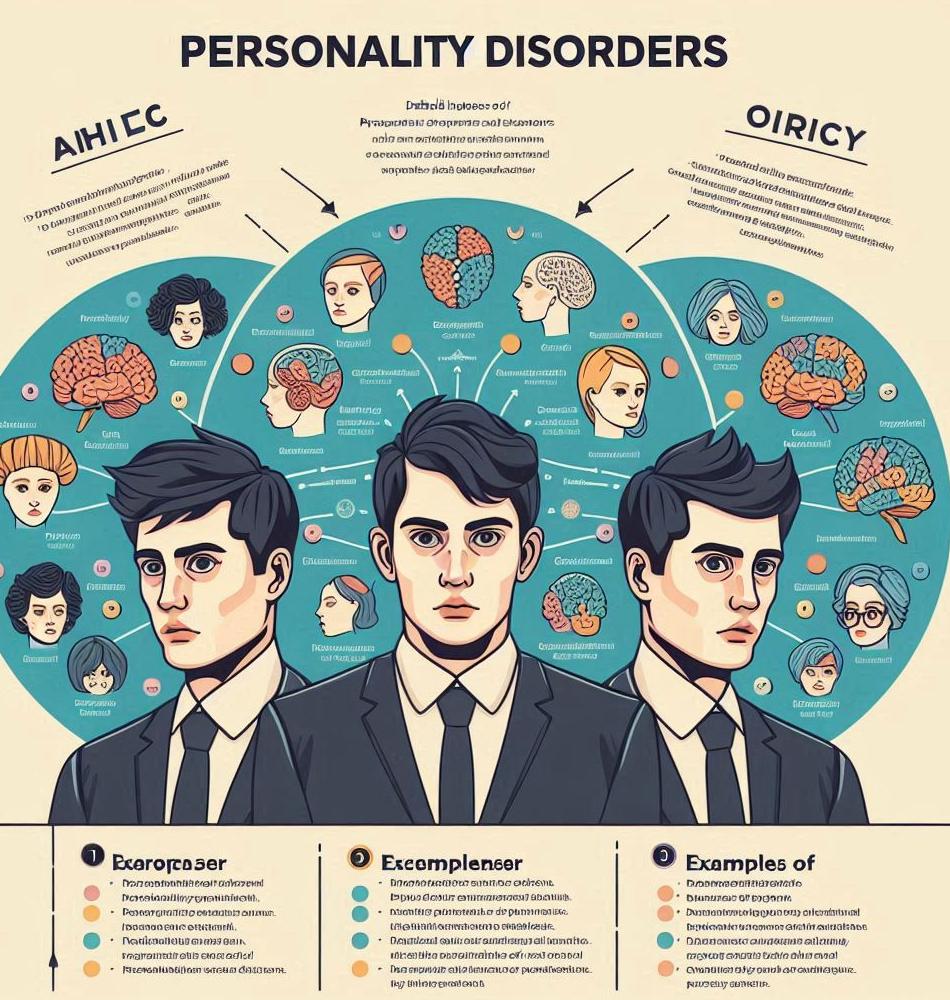Personality disorders are fascinating yet often misunderstood conditions that can deeply affect a person's behavior, relationships, and overall functioning. In a world where personality types can range from charming to chaotic, understanding these disorders can help foster empathy and awareness. The ten personality disorders fall under three clusters, according to the Diagnostic and Statistical Manual of Mental Disorders (DSM-5). This article takes you on a journey through each disorder, revealing insights into their characteristics, potential causes, and treatment options. So, let’s dive in!
The Three Clusters of Personality Disorders 🌐
Personality disorders are generally categorized into three clusters: A, B, and C. Each cluster contains distinct disorders with shared traits. Here is a brief overview of each cluster:
- Cluster A: Odd or eccentric behaviors
- Cluster B: Dramatic, emotional, or erratic behaviors
- Cluster C: Anxious or fearful behaviors
Cluster A: The Eccentric Trio 🦄
Individuals within Cluster A often display odd behaviors that can set them apart from societal norms. The following disorders are included in this cluster:
1. Paranoid Personality Disorder 🚨
Characterized by pervasive distrust and suspicion. Individuals believe others are out to harm them. Common signs include:
- Interpreting neutral remarks as insults
- Holding grudges
- Questioning others' loyalty
2. Schizoid Personality Disorder 👤
People with this disorder often seem detached from social relationships. They prefer solitude and are indifferent to praise or criticism. Key characteristics include:
- Emotional coldness
- A lack of desire for intimacy
- Limited interests outside of solitude
3. Schizotypal Personality Disorder 🎩
This disorder is marked by atypical thought patterns and eccentric behavior. Individuals may hold odd beliefs or magical thinking. Symptoms may include:
- Illusions or strange beliefs
- Inappropriate or constricted affect
- Peculiar speech patterns
Cluster B: The Dramatic Ensemble 🎭
Cluster B disorders are notorious for their dramatic, emotional, and erratic behaviors. Here’s what you should know:
4. Antisocial Personality Disorder 🔪
This disorder is exemplified by disregard for others’ rights and social norms. Those affected often engage in deceitful behavior. Symptoms can include:
- Lack of remorse for harmful actions
- Impulsivity
- Manipulative behaviors
5. Borderline Personality Disorder 🌪️
Individuals with borderline personality disorder often struggle with unstable emotions and relationships. Key traits include:
- Intense fear of abandonment
- Impulsivity in self-damaging behaviors
- Sudden emotional shifts
6. Histrionic Personality Disorder 🎉
The hallmark of this disorder is a pattern of excessive attention-seeking behavior. Features comprise:
- Overly dramatic expressions of emotion
- Uncomfortable when not the center of attention
- Inappropriately seductive behavior
7. Narcissistic Personality Disorder 👑
This disorder is characterized by a sense of grandiosity and a need for admiration. Individuals exhibit traits like:
- Exaggerated self-importance
- Belief that they're unique and deserving of special treatment
- Difficulty empathizing with others
Cluster C: The Anxious Crowd 😰
Cluster C personality disorders are marked by anxious or fearful behaviors. Here’s what to look for:
8. Avoidant Personality Disorder 🚷
People affected by this disorder often experience extreme shyness and fear of criticism. Common signs are:
- Avoiding social situations
- Feeling inadequate
- Sensitivity to negative evaluations
9. Dependent Personality Disorder 🤝
Individuals with this disorder exhibit an excessive need to be taken care of, leading to submissive behaviors. Symptoms may include:
- Difficulties making decisions without reassurance
- Fear of being left to fend for oneself
- Clingy behavior
10. Obsessive-Compulsive Personality Disorder 🔒
This is not the same as obsessive-compulsive disorder. People with this personality disorder are preoccupied with orderliness and perfectionism. Key features include:
- Reluctance to delegate tasks
- Rigidity in morals and ethics
- Over-involvement in work to the exclusion of leisure
Common Questions about Personality Disorders ❓
- What causes personality disorders?
- Are personality disorders treatable?
- How can I support someone with a personality disorder?
- What is the difference between a personality disorder and a mental illness?
- Can personality disorders be diagnosed in children?
Conclusion 📝
Understanding the ten personality disorders can lead to more effective empathy and communication with those who exhibit these behaviors. While they can be challenging for individuals and their loved ones, awareness is the first step toward seeking help and implementing coping strategies. Diagnosing and treating personality disorders takes time and patience, but with professional guidance, individuals can find their way to healthier relationships and happier lives. Awareness can lead us to a more compassionate and understanding society, where we can accept each other despite our quirks and differences.


